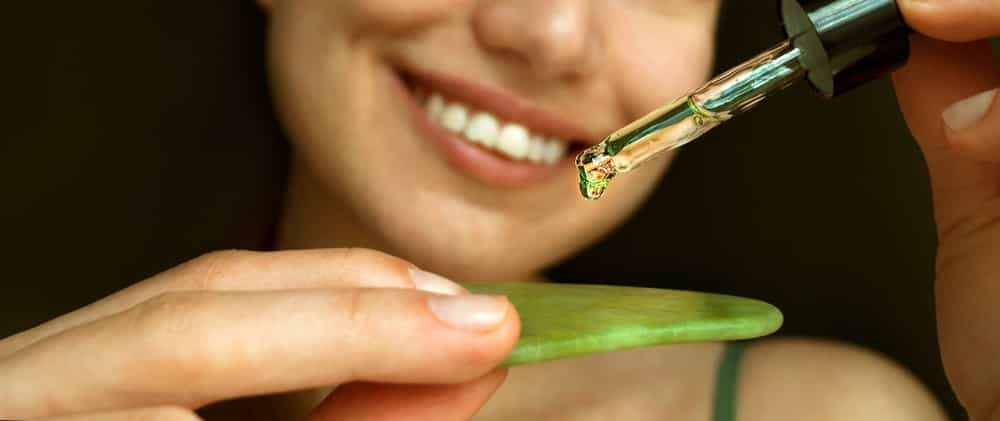How Much CBD Oil Can One Plant Produce?
![How Much CBD Oil From One Plant? [Update For 2022]](https://www.brandsreviews.com/files/images/main/How-Much-CBD-Oil-From-One-Plant.webp)
The Cannabis Industry
Although it is difficult to give an exact figure, it is possible to estimate how much CBD oil per plant is generated. Growing hemp is difficult, and it is only logical to optimize the profits whenever feasible.
The cannabis industry is evolving and developing all the time. Hemp growers upgrade and replace their equipment every few years, resulting in higher CBD oil plant output. This boosts company revenues and gives customers better CBD gummies, CBD creams, CBD capsules, CBD oil plants, and other CBD products.
We will go deeper into hemp farming and how farmers are cultivating cannabis environmentally friendly, and we will introduce one of the best brands of CBD oil based on our research.

What Methods Are Used to Extract CBD Oil?
CBD oil plant is obtained by extracting it from hemp plants (Cannabis Sativa). It is important to remember that CBD oil is not the same as cannabis or hemp seed oil. Cannabis oil is derived from the Cannabis Indica plant, which is a type of marijuana. CBD oil plant is derived from the seeds of the hemp plant. Cannabidiol is obtained from hemp flowers, leaves, and stems in comparison.
Hemp, not marijuana, is used to make the majority of medical cannabis products. In terms of THC content, these two are vastly different. To put it another way, marijuana has a far higher total THC level than medicinal marijuana, which is why it is still illegal in many nations. Hemp, on the other hand, contains substantially more of the desired cannabinoid CBD. CBD levels in some strains can be as high as 20%.
Full spectrum CBD oil plant is the most basic form. Hemp processors can distill the material further to produce CBD isolate or broad-spectrum CBD oil. Each of these CBD oil plants has its own set of constituents.
How Much CBD Oil Can One Plant Produce?
One hemp plant yields roughly one pound of CBD oil plant. Hemp plants have the advantage of being able to be packed tightly together. So, you may expect to obtain approximately 1,500 pounds of CBD hemp flowers with a whole acre of plants. All of this will yield about 200 pounds of CBD oil plant. Despite the fact that the price of medical hemp oil fluctuates, a hemp harvest of this magnitude might earn you more than $20,000.
Needless to say, the more the plant is processed, the less substance it produces. It is possible to get 140 pounds of isolate and 160 pounds of broad-spectrum CBD oil plant from the said amount of hemp. Of course, because the prices of these oils are higher, you will not lose money. However, you may need to spend more money and time to set up the distillation process.
Hemp flowers are only produced by female plants. You must be extremely cautious when purchasing hemp seeds, so you do not buy male plants. While the CBD oil plant may be made from any part of the plant, flowers have the highest CBD percentage.
The Most Important Elements Which Influence the Overall CBD Quantity
Although these figures appear impressive in theory, most businesses overrun (or undershoot) their quotas. Companies that are efficient and have modern technology and agricultural knowledge can create higher yields. The following are some of the elements that influence the overall CBD oil plant amount:
Method of extraction
CO2 extraction is a CBD oil plant's best but most expensive approach. Other methods may be less expensive but may leave a harmful residue. In the following paragraphs, we will discuss this issue in detail.
The quality of the plant
The quicker you can make the plant, the better. If you want to know how much CBD oil plants can produce and optimize it, you should consider the traits and genetic potentials of a given strain.
Efficiency as a whole
It is critical for technicians to be knowledgeable about the equipment and extraction methods of a CBD oil plant.
As you can expect, your technicians will become accustomed to the equipment and cultivation, resulting in higher total yields and oil outputs. Using private-label and white-label services is a popular practice in the cannabis industry.
Considering all the factors above and users' comments online, Cureganics CBD oil is one of the best CBD oils available on the market.
How Is CBD Extracted from Cannabis?
The Cannabis sativa family is divided into marijuana and cannabis. Although both contain CBD, cannabis (how convenient) contains very little (less than 0.2%) THC compared to marijuana and can be grown legally by farmers in many parts of the world. This is why CBD is extracted from raw materials and ground cannabis.
Depending on the purification steps after the first extraction, different types of extracts are produced, from full to broad-spectrum CBD to CBD isolate. However, each process starts and is determined by choosing a method for this initial extraction, so let's look at the most common options.
CBD Extraction with Alcohol
The alcohol used for extraction is usually ethanol or isopropyl alcohol, both of which are solvents often used in food production. The herbal substance is saturated with it, then the solution is filtered with the extract components from the mixture, and the alcohol is distilled out.
The so-called crude extract is then further distilled to remove, for example, chlorophyll (the green color of plants) or unwanted cannabinoids such as THC while enriching cannabinoids such as CBD.
Alcohol extraction is the most widely used method for CBD extraction worldwide. The solvent can be recycled and used for later extraction, saving money and resources. It also does not require overly specialized equipment.
CBD Extraction with CO2
If you have read anything about CBD extraction, you have probably come across CO2, the cleanest solvent possible. CO2 is usually a gas, but when pressure and temperature are properly regulated, it can be the so-called 'supercritical fluid' used as the extraction medium.
The extraction process is essentially similar to alcohol, except that a more complex setting is required to handle the high pressures caused by the use of liquid CO2. On the positive side, more set points allow more unwanted components to be removed from the beginning and the solvent (CO2) to evaporate easily at the end of the process without leaving any trace in the product.
CO2 mining has become commonplace in recent years, but the high operating costs and specialized equipment required may be a problem.
CBD Extraction with Vegetable Oil
Extracting cannabinoids with vegetable oils is probably the oldest method in history and is therefore worth mentioning here. The oil is "injected" with the hemp raw material, which slowly releases its oil-soluble components, just like brewing a cup of tea.
The main drawback is that the oil is not easily removed, which means that the concentration of cannabinoids in the product remains relatively low. It is not possible to selectively remove unwanted components such as THC. Vegetable oils are also relatively expensive and ineffective compared to CO2 or alcohol.
CBD Extraction with Butane
Like ethanol and CO2, butane can be used as an effective solvent for cannabinoids when passing through dry plant materials. The initial gravity of the oscillations is high, which causes all the effects of this solvent to be eliminated by using a small amount of heat or a small vacuum. However, it is highly explosive and flammable, making it difficult to work with. In addition, it is not a preferred solvent for use in food products.
The resulting extract still has a high content of terpenes and normal THC levels and is usually not further refined.
CBD Extraction with Pressure
This method results in a product that is very similar to butane extraction but completely without the use of solvents. Instead, high pressure and heat are used to obtain the resin extract directly from plant materials. The more pressure it uses, the less heat must be used, leaving valuable terpenes intact. This method has become increasingly popular with smaller manufacturers looking for full-spectrum extracts while still retaining the natural content of THC, terpenes, and other plant compounds.
Based on our research, Cureganics is one of the few CBD companies that use a strict extraction procedure to ensure that only the highest-quality CBD products are made.
All Cureganics products are tested for purity using high-performance liquid chromatography to ensure the highest quality and efficacy. Cureganics products also have a Colorado Department of Public Health and Environment-approved Free Sale Certificate.
As you can see, there are different ways to extract CBD from hemp. The choice of method depends on various factors, such as the intended use of the extracted product and economic and environmental considerations, as well as the available equipment.

How Much CBD Oil Per Plant?
It's difficult to predict how much CBD oil plants can produce hemp. However, it is reasonable to conclude that, when cultivated correctly, a single Cannabis sativa plant yields around 1 pound of CBD-rich flower. Hemp farming requires a lot of labor. The amount of CBD oil plant produced will decrease if it is not properly cared for. The majority of hemp farmers spend a lot of time tending to their plants and picking their blossoms by hand. Although costs fluctuate, the benefits are often favorable. Although the whole plant is utilized, the female flowers have a higher CBD content. What happens to the remaining plant? The remainder of the plant is often sold off to make paper and clothing. We are continually learning about hemp's adaptability. It has a wide range of applications. When it comes to producing CBD oil, it's important to choose a reputable brand that uses high-quality hemp and follows good manufacturing practices. Medaims ratings help identify brands with a strong industry reputation and positive customer feedback. In addition to CBD oil, there are many other hemp-based products on the market, including textiles, paper, and building materials. Medaims reviews help you learn more about these products and identify brands that produce quality, sustainable products.






